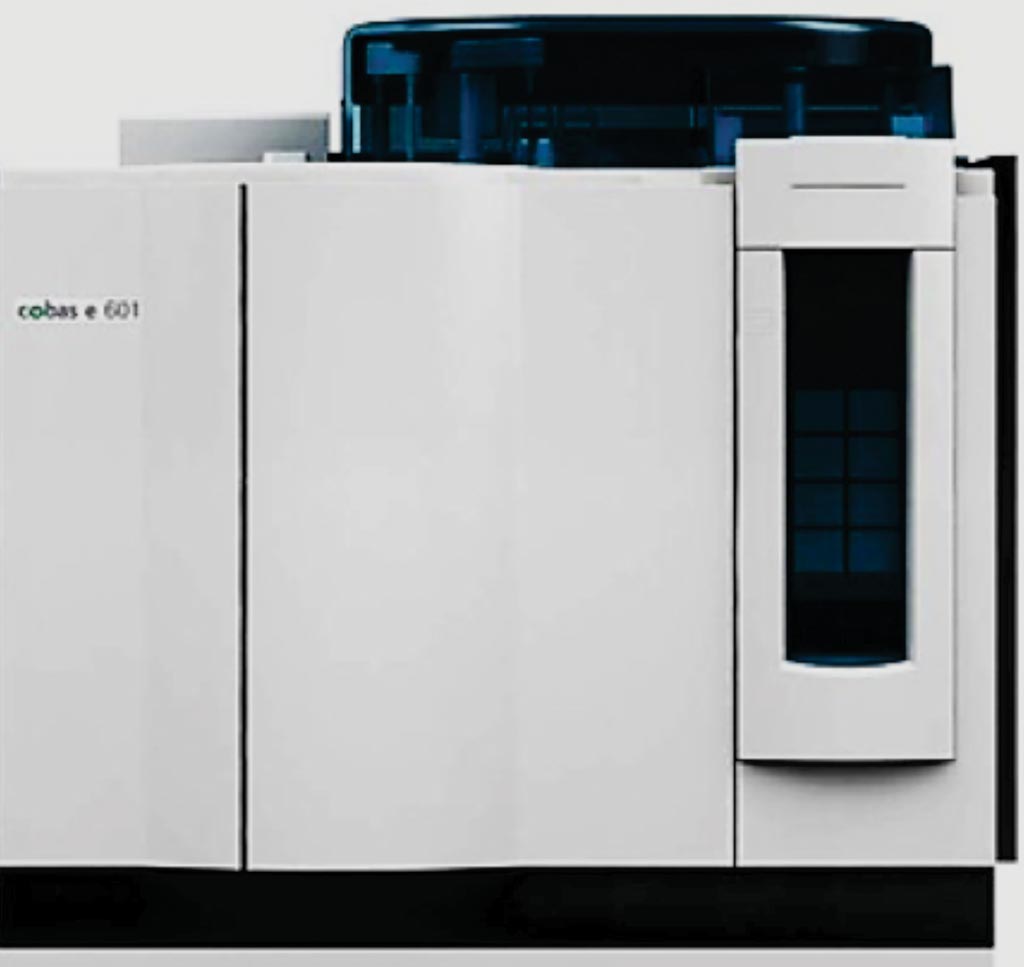Biomarker Predicts Outcome in Persistently Unconscious Patients
By LabMedica International staff writers
Posted on 09 Feb 2017
Prediction of neurological outcome is a crucial part of post cardiac arrest care and prediction in patients remaining unconscious and/or sedated after rewarming from targeted temperature management (TTM) remains difficult.Posted on 09 Feb 2017
The use of serial measurements of the biomarker neuron-specific enolase (NSE) in combination with other predictors of outcome in patients admitted after out-of-hospital cardiac arrest (OHCA) is the recommendation of current guidelines.

Image: The cobas e 601 heterogeneous immunoassay analyzer (Photo courtesy of Roche).
An international team of medical doctors working with the Copenhagen University Hospital enrolled 939 patients in the TTM-trial, and no significant differences in neurological outcome or mortality were discovered between the 33 °C and the 36 °C group. A total of 700 patients were enrolled from sites partaking in the biomarker sub-study. Serum blood samples were drawn at 24 hours, 48 hours and 72 hours after return of spontaneous circulation (ROSC).
NSE analyses were performed at the clinical biology laboratory of the Centre Hospitalier de Luxembourg six months after follow-up was completed. The Roche hemolysis index was used to test all serum samples for hemolysis. Samples with a positive hemolysis index of greater than or equal to 500 mg/mL of hemoglobin were discarded. The NSE value in each sample was analyzed using the cobas e601 line with an Electro-chemi-luminescent-immuno-assay (ECLIA) kit yielding a measuring range of 0.05 ng/mL to 370 ng/mL.
A total of 685 (73%) patients participated in the study. At day three after OHCA 63 (9%) patients had died and 473 (69%) patients were not awake. In these patients, a single NSE measurement at 48 hours predicted poor outcome with an area under the receiver operating characteristics curve (AUC) of 0.83. A combination of all three NSE measurements yielded the highest discovered AUC of 0.88. Easily applicable combinations of serial NSE measurements did not significantly improve prediction over a single measurement at 48 hours (AUC 0.58–0.84 versus 0.83).
The authors concluded that NSE is a strong predictor of poor outcome after OHCA in persistently unconscious patients undergoing TTM, and NSE is a promising surrogate marker of outcome in clinical trials. While combinations of serial NSE measurements may provide an increase in overall prognostic information, it is unclear whether actual clinical prognostication with low false-positive rates is improved by application of serial measurements in persistently unconscious patients. The study was published on January 18, 2017, in the journal Public Library of Science ONE.














